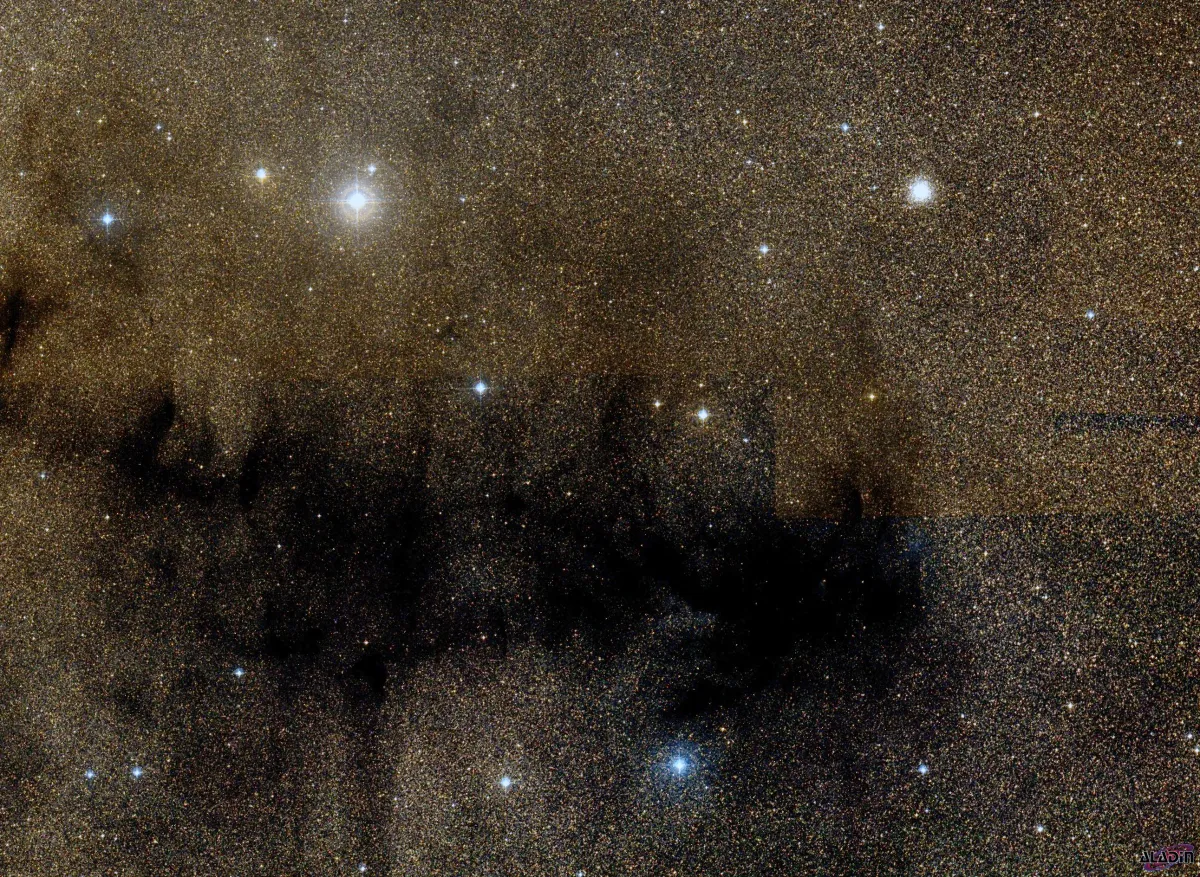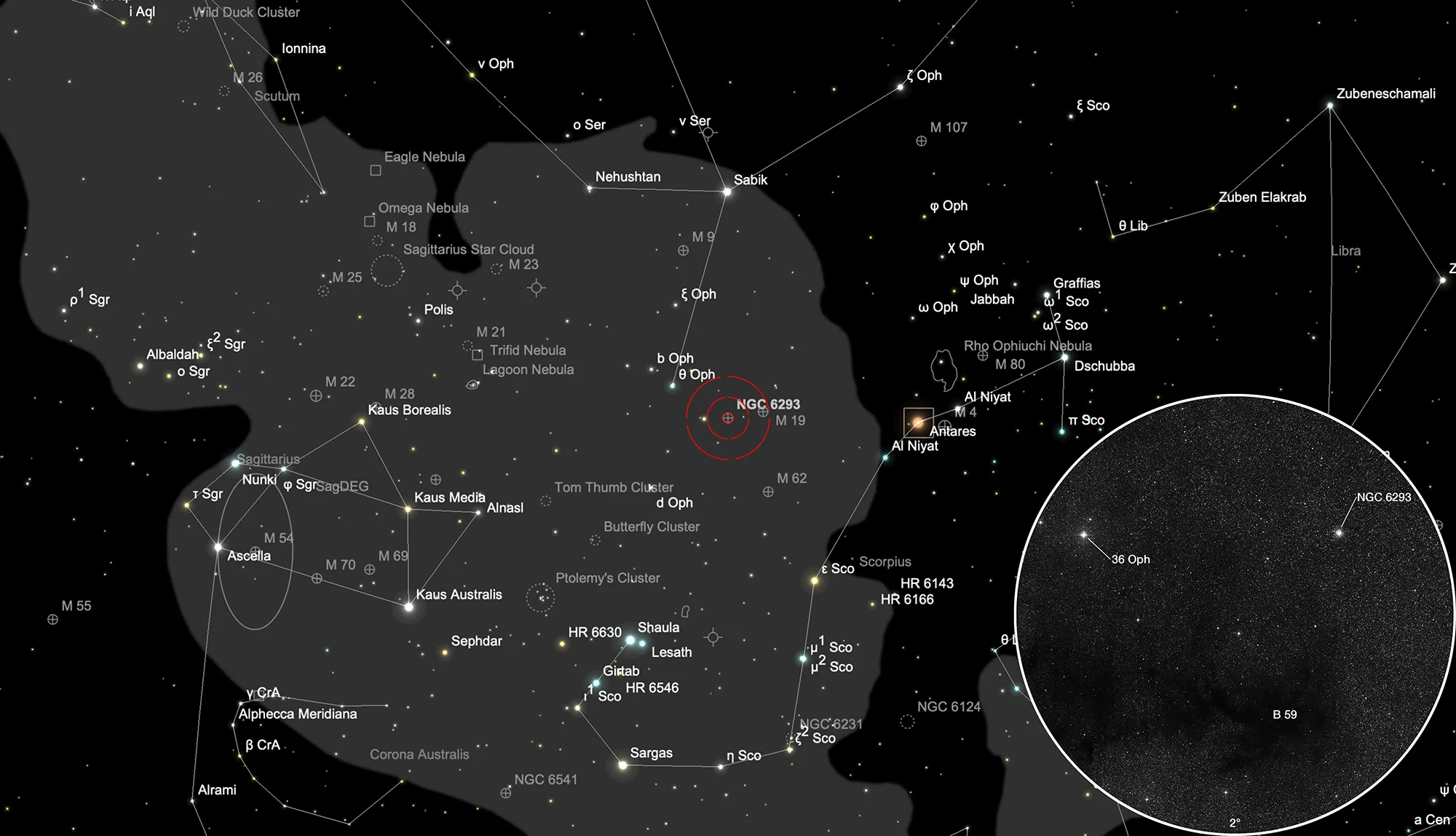Globular Cluster NGC 6293 & Dark Cloud Barnard 59

NGC 6293
This globular cluster was discovered by William Herschel on 24 May 1784 and cataloged as VI-12. He noted the following: «Another miniature cluster like thee preceding [M 19], but rather coarser.» [463] John Herschel first observed it at home in Slough during sweep 148 on 16 April 1828 and listed it as h 1977 with the note: «Very bright, round, preddy suddenly brighter in the middle; 90"; resolved; the stars are 19 or 20 m. This then is entitled to the name of a globular cluster.» [466] Later during his observation in 1834-1838 from South Africa he observed the same cluster twice and listed it as h 3667. [11]
| Designation | NGC 6293 |
| Type | GCL (IV) |
| Right Ascension (J2000.0) | 17h 10m 10.4s |
| Declination (J2000.0) | -26° 34' 52" |
| Diameter | 8.2 arcmin |
| Visual magnitude | 8.3 mag |
| Metric Distance | 9.500 kpc |
| Dreyer Description | globular, vB, L, R, psbM, rrr, st 16 |
| Identification, Remarks | WH VI 12; h 1977=3667; GC 4270; GCL 55; ESO 519-SC5 |
Barnard 59
In 1919 Edward. E. Barnard found on photographs he made an irregular dark cloud near cluster NGC 6293 and listed it as B 59 in his «On the Dark Markings of the Sky». [239]
| Name | Barnard 59 |
| Object Type | Dark Cloud (nebula) |
| Right Ascension (J2000.0) | 17h 11m 18s |
| Declination (J2000.0) | -27° 22' 00" |
| Angular size | 50' × 50' |
| Identifiers | Barnard 59; LDN 1746; TGU H25 P5; [DB2002b] G357.08+7.19 |
Finder Chart
The globular cluster NGC 6293 with the dark clouds Barnard 59 is located in the constellation Ophiuchus. They are on 10 June in opposition to the Sun. From your location it can best be seen in the months February to November.
